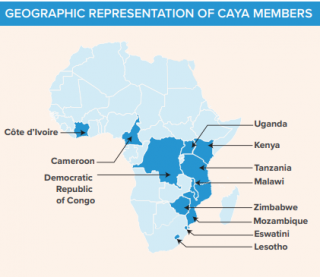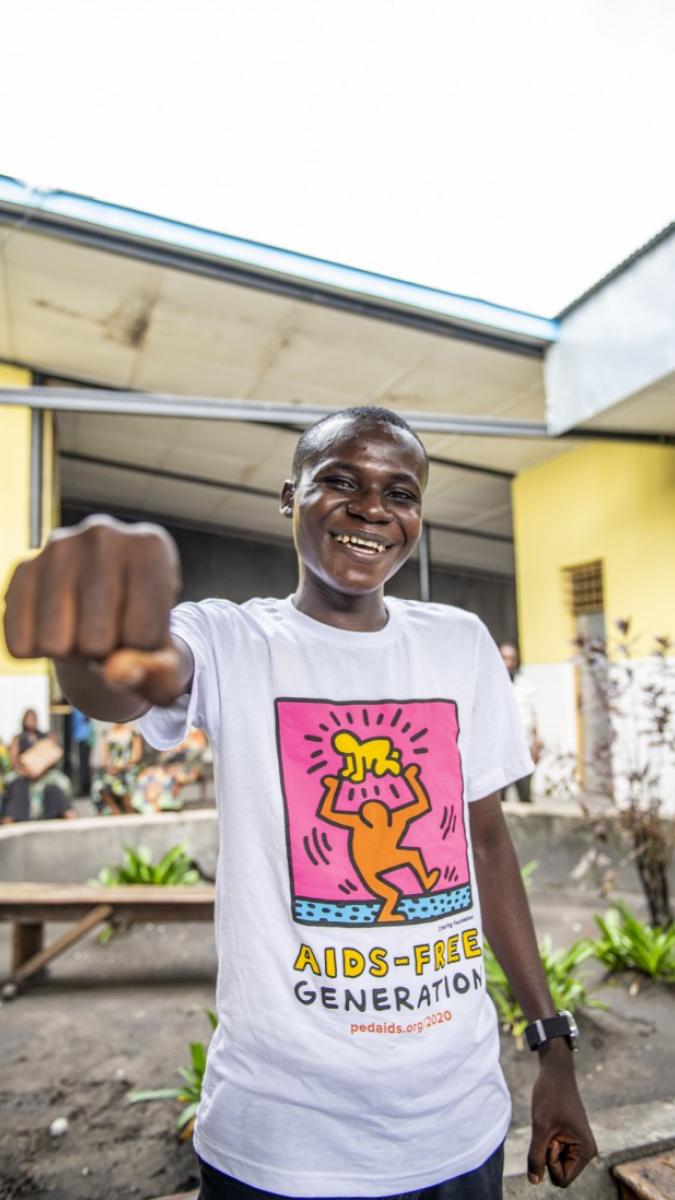Authors: Cosima Lenz, Technical Officer, Elizabeth Glaser Pediatric AIDS Foundation (EGPAF) and members of the Committee of African Youth Advisors (CAYA).
USAID has partnered with EGPAF since 2002 to provide HIV prevention, care, and treatment services to children and families in the world’s most affected regions. Currently, the Office of HIV/AIDS works closely with EGPAF to implement PEPFAR programs in five countries: Uganda, Lesotho, Eswatini, Tanzania, and the Democratic Republic of the Congo. The Elizabeth Glaser Pediatric AIDS Foundation was established more than 30 years ago and is one of the earliest PEPFAR partners. EGPAF seeks to end HIV/AIDS globally in children, youth, and families.
While many countries continue to progress towards reaching HIV epidemic control among the adult population, children, adolescents, and youth living with HIV consistently experience worse outcomes when compared to adults living with HIV. According to UNAIDS, nearly two million children are living with HIV and only 53 percent of those individuals have been diagnosed and are on treatment. Additionally, AIDS-related illnesses are the second leading cause of death among African adolescents.
Recognizing the need and value of intentionally engaging adolescents and youth to develop effective HIV prevention programming, the Elizabeth Glaser Pediatric AIDS Foundation (EGPAF) created the Committee of African Youth Advisors (CAYA) in 2018. Youth representatives, coined “CAYA members,” are young people, ages 15 to 29 years old, who work as advocates, peer educators, and peer supporters in their communities who help to inform EGPAF programming. Importantly, there is no requirement in regard to CAYA members’ HIV status, which helps to foster diverse perspectives and experiences in the development of EGPAF resources and programming. CAYA member, Rosa, said, “CAYA is a platform where ideas are developed into theories and impact many lives across the globe. CAYA managed to impact me positively by giving me an opportunity to share my ideas and other members’ ideas through my representative capacity.”

Photo Credit: Elizabeth Glaser Pediatric AIDS Foundation
CAYA members represent 11 African countries with each country team consisting of two members. CAYA members sign a two-year volunteer contract and receive a monthly stipend ($42/month) to facilitate participation in monthly virtual calls, Zoom meetings, and WhatsApp chats. CAYA members are supported by a local EGPAF staff member in their respective countries, known as CAYA focal points. These staff work with CAYA members, join monthly calls, support their CAYA-related work, address any needs that arise, and liaise with the EGPAF global team. The CAYA Global Team, comprises representatives from various departments across EGPAF (i.e., External Affairs, Public Policy & Advocacy, Technical Strategy & Innovation, Research, Program Implementation and Country Management) to support information flow across the Foundation.
CAYA members work on a range of initiatives and activities spanning the HIV, sexual reproductive health (SRH), tuberculosis (TB), and prevention spaces. CAYA members have supported the development of clinical tools for adolescents and youth living with HIV (AYLHIV) to help their peers navigate the disclosure of their HIV status and CAYA members have created resources that address adolescent and youth challenges, as identified by their peers.

Photo Credit: Eric Bond
Most recently, CAYA members developed brief cartoons using the Avert Young Voices platform. The result is a story-based cartoon guide that outlines realistic, relevant, and relatable stories, providing a youth-friendly way to talk about some of the common challenges around medication adherence, viral load suppression, and understanding that Undetectable=Untransmittable. The guide also delves into complex topics salient to adults living with HIV, including reasons why providers may change a treatment regimen and how to navigate treatment fatigue.
Capacity-building support for CAYA members is a key component of the CAYA program and includes discussions with technical experts and other youth leaders, informal “ask-the-doctor" Q&A sessions, and skills-building exercises focused on presenting, writing, and advocacy. Further, EGPAF prioritizes learning from other young leaders and networks so CAYA members can gain insights and share experiences. For example, CAYA meets quarterly with CHIVA’s Youth Committee (CYA) based in the United Kingdom to discuss an array of topics, including staying resilient with adherence to HIV medication and encountering and dealing with stigma in healthcare and school settings. As participants in EGPAF’s global advocacy efforts, CAYA members are not only agents of change in their local communities, but also nationally and internationally and have presented abstracts and served as panelists at HIV/AIDS conferences and workshops.
“Looking back at where we came from with the CAYA members, one can only marvel at the growth and maturity of our volunteers. One of our members represented us at the past two Adolescent Conferences we had due to the good work they are doing. CAYA has huge potential for influencing the policies in the country,” said Menzi, CAYA focal point member, Eswatini.
At a global level, CAYA has contributed to advocacy initiatives and campaigns focused on HIV, psychosocial support (PSS), mental health, and TB. In line with the 52nd Union World Conference on Lung Health, CAYA created a list of practical recommendations for stakeholders in the TB field to improve the delivery of TB services for adolescent and youth populations.
"CAYA has had a significant and tangible impact on the way in which we design tools, develop resources, and engage in dialogues internally and externally,” said Associate Director of Pediatrics for EGPAF, Dr. Judith Kose. “CAYA engagement and partnership has been critical to ensure that the content we develop responds to youth needs and perspectives. CAYA has also been a momentous mechanism to promote intentionally involving adolescents and youth across the gambit of our work."
